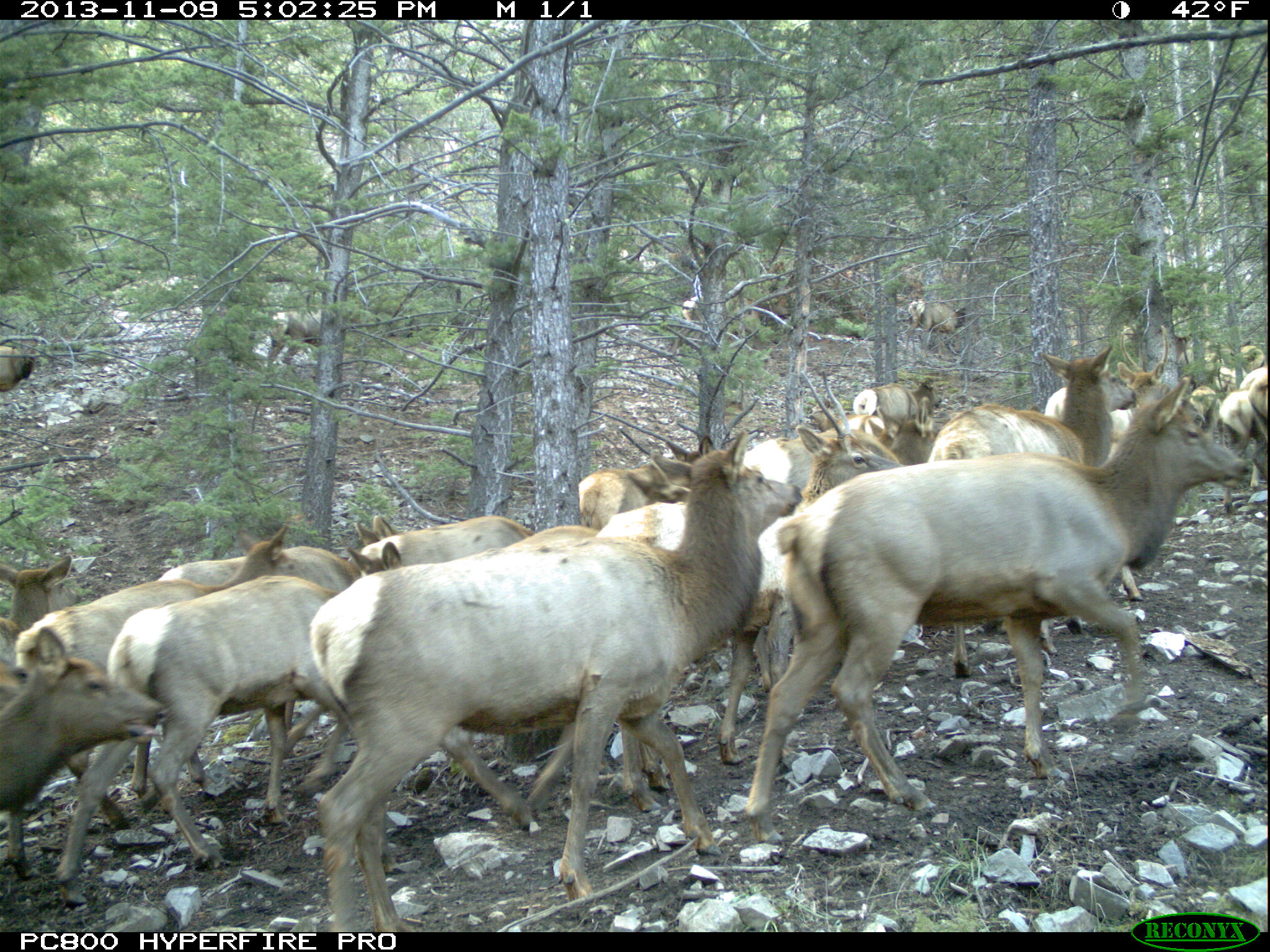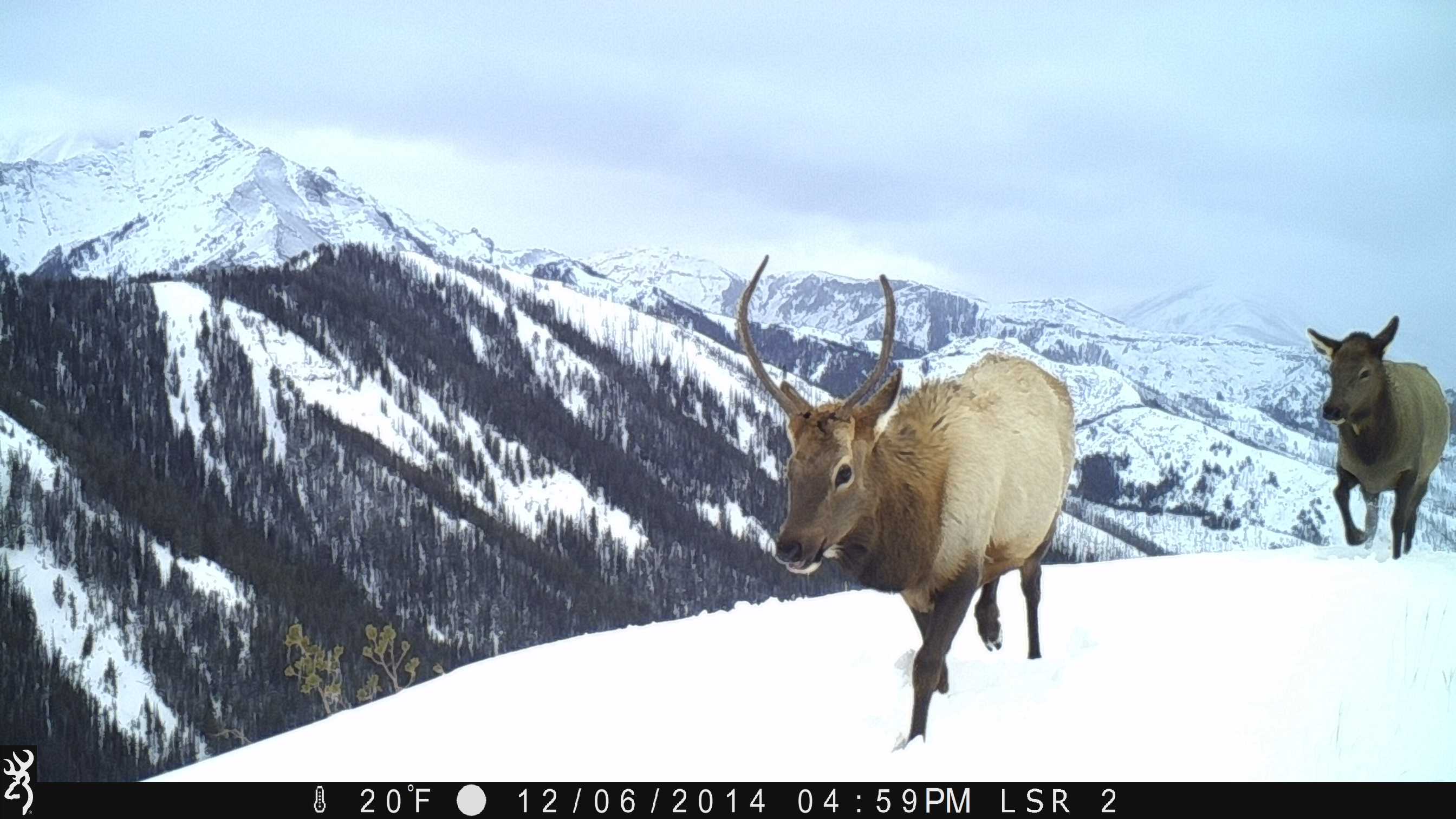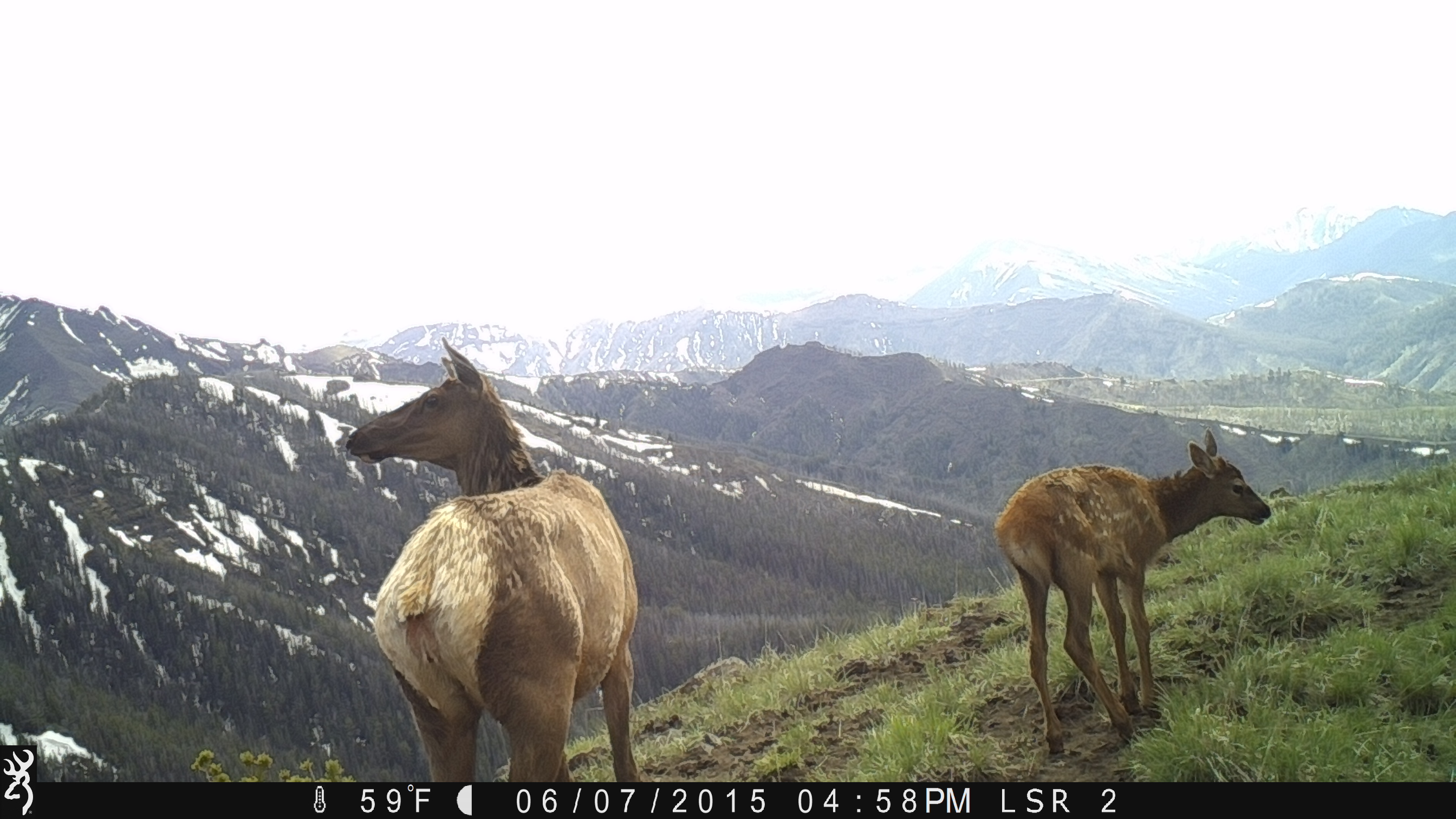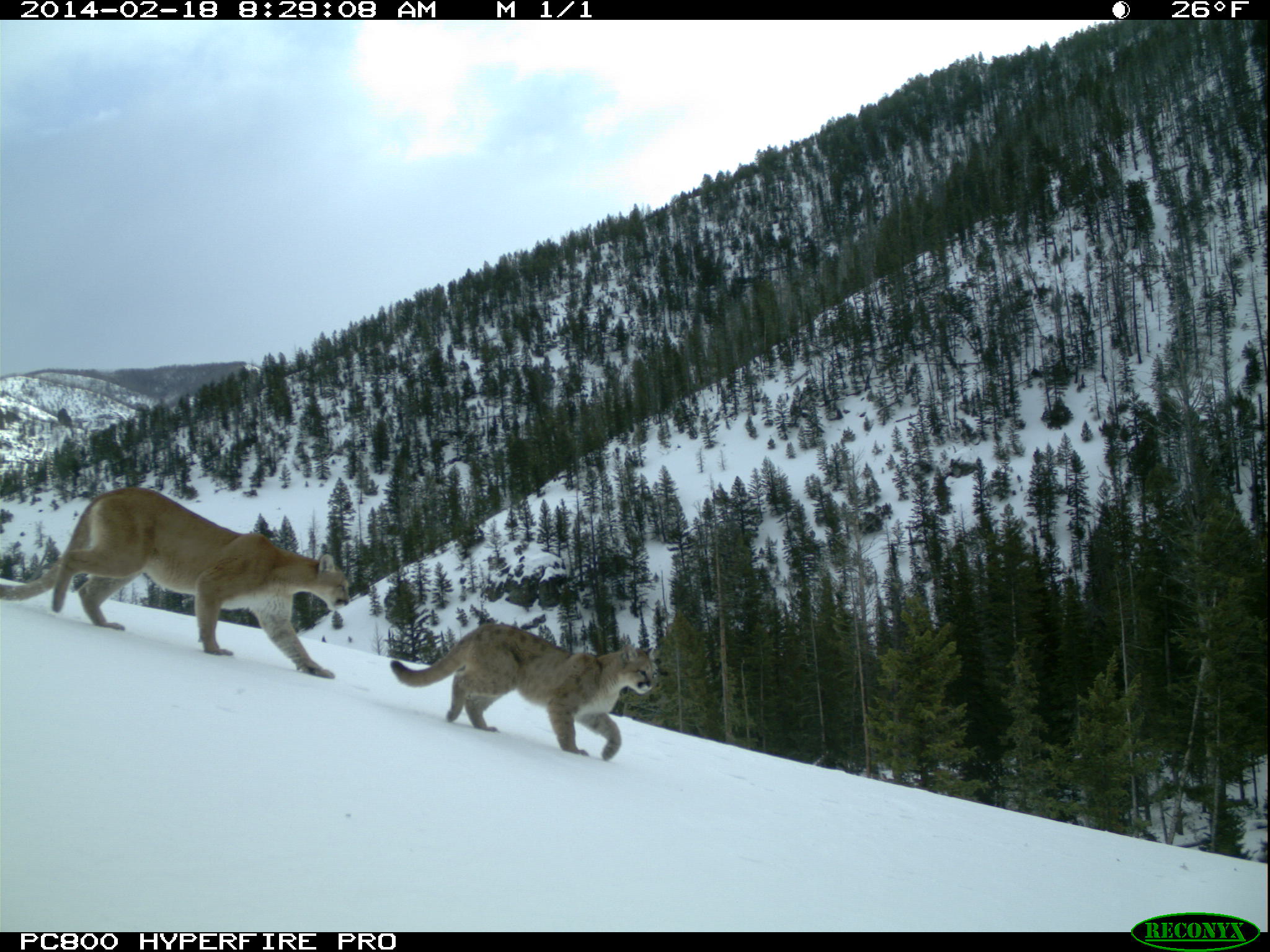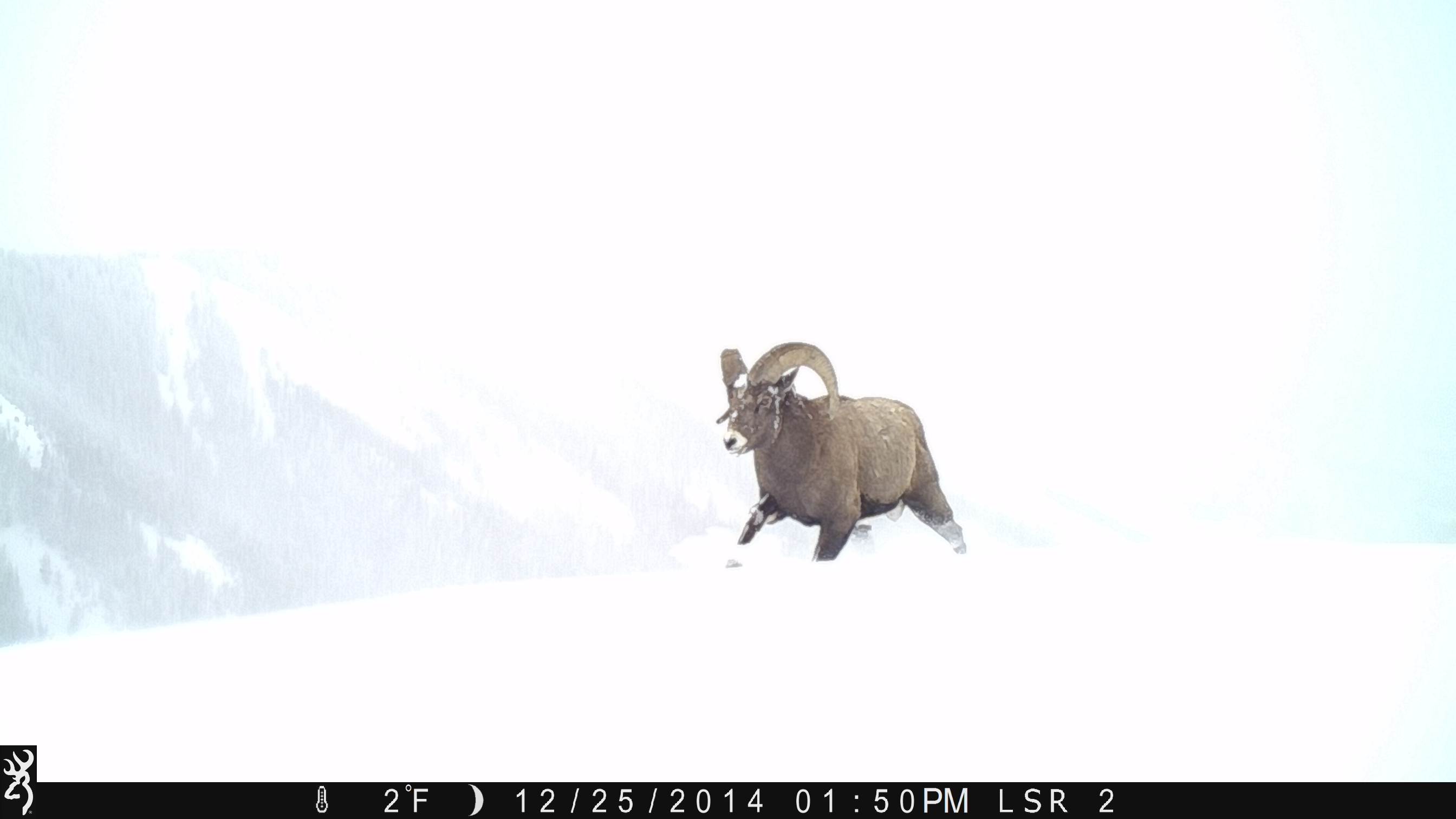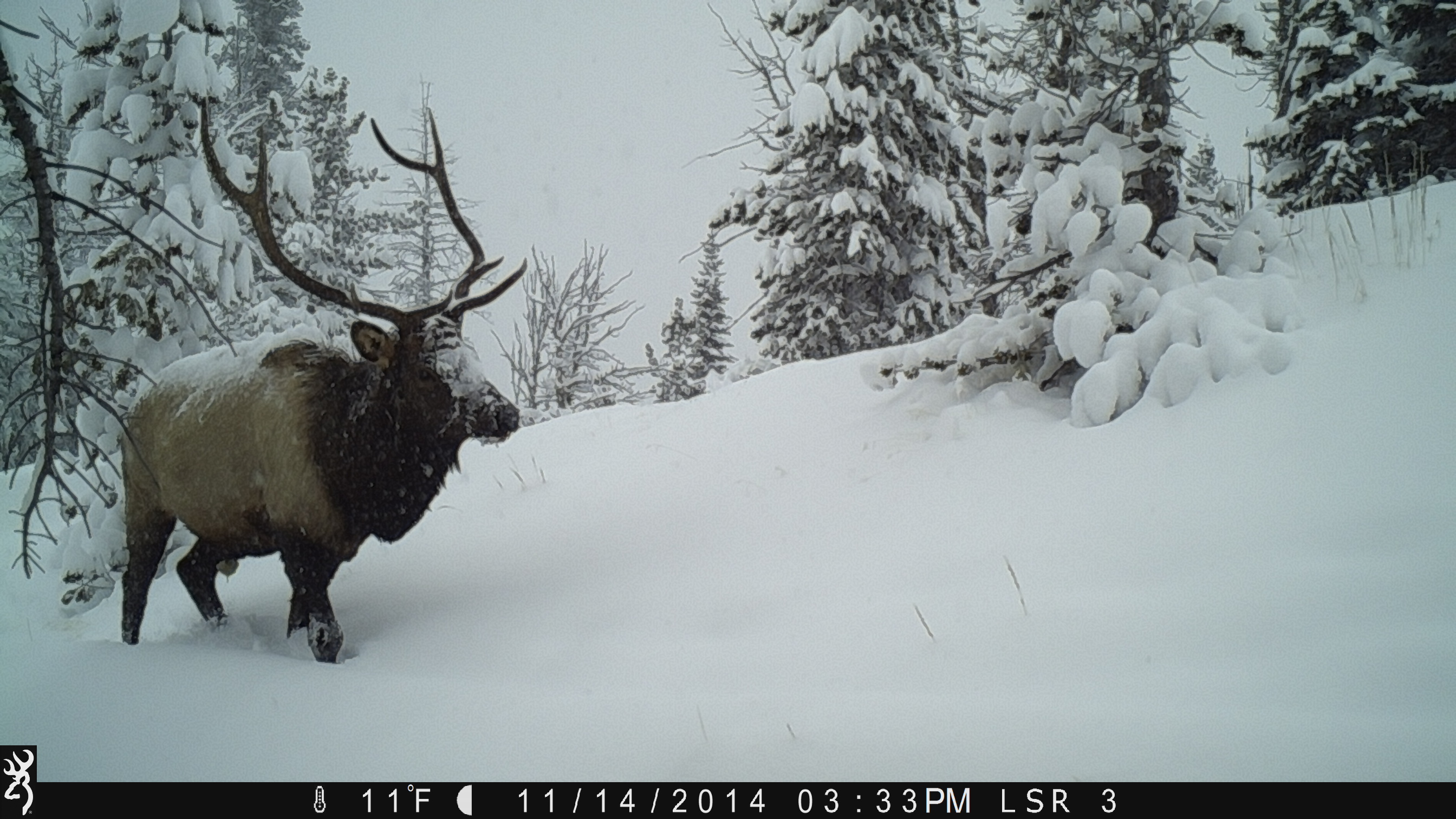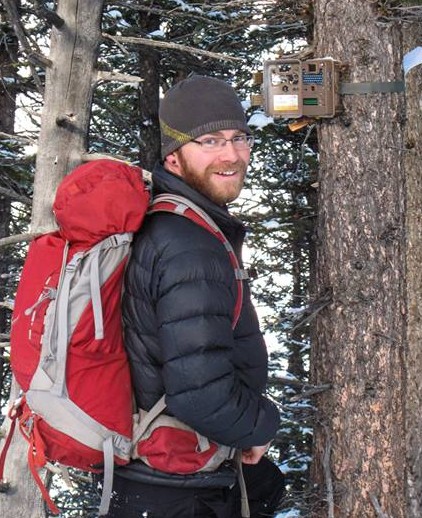Herd composition surveys are conducted annually for big game species in Wyoming and elsewhere. These surveys provide biologists with information regarding the age and sex ratios of each herd as well as recruitment rates. This information is critical for setting and reaching population objectives and adjusting harvest limits. Traditionally, these surveys are conducted via helicopter and fixed wing aircraft; but these techniques are very costly, and they are potentially dangerous for the personnel involved. Recent success in using remotely triggered cameras to classify migratory mule deer passing through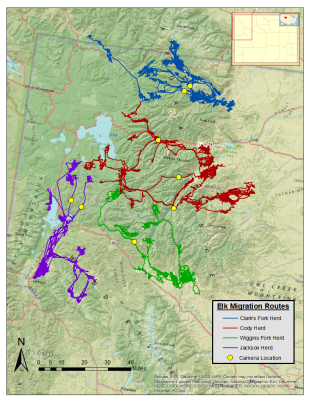 highway underpasses has sparked an interest further investigations of this method. We are evaluating the efficacy of using trail cameras to collect herd composition data for several migratory elk herds that inhabit the Greater Yellowstone Ecosystem. Where highway underpasses offer convenient ‘funnels’ along migratory routes for mule deer, determining where naturally occurring bottlenecks occur on the landscape is less intuitive. We have used GPS locations from collared elk in four migratory herds to determine where migration routes overlap, suggesting areas where elk herds must converge through restrictive travel corridors along their migratory routes.
highway underpasses has sparked an interest further investigations of this method. We are evaluating the efficacy of using trail cameras to collect herd composition data for several migratory elk herds that inhabit the Greater Yellowstone Ecosystem. Where highway underpasses offer convenient ‘funnels’ along migratory routes for mule deer, determining where naturally occurring bottlenecks occur on the landscape is less intuitive. We have used GPS locations from collared elk in four migratory herds to determine where migration routes overlap, suggesting areas where elk herds must converge through restrictive travel corridors along their migratory routes.
Photographic monitoring stations located along migration routes have provided over 300,000 images of migrating elk and other wildlife species. In many locations, several thousand elk have been observed as they migrate through these bottlenecks during the spring and fall migration periods. Long-term migration trends are being observed where trail cameras have been in place for several years.
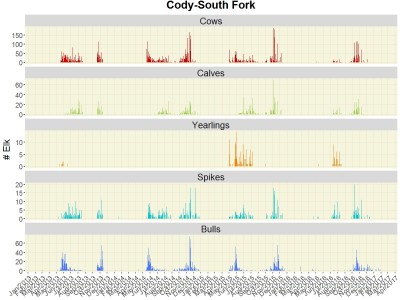
Monitoring the timing of migration for each of these herds has provided some valuable insight into differences in migration activity between adult bull and adult cows, as well as differences between cows with calves and cows without 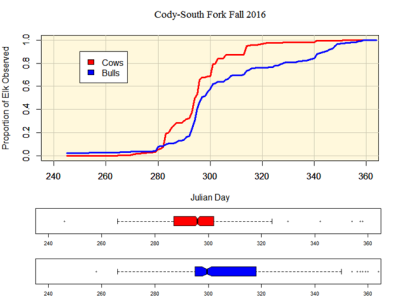 calves. During spring migration periods between 2013 and 2017, we observed differences in migration timing between adult bulls and adult cows in 70.5% of all observed migrations across herds. Fall migration timing was less variable between adult bulls and adult cows with only 55.5% of observed herds exhibiting differences.
calves. During spring migration periods between 2013 and 2017, we observed differences in migration timing between adult bulls and adult cows in 70.5% of all observed migrations across herds. Fall migration timing was less variable between adult bulls and adult cows with only 55.5% of observed herds exhibiting differences.
Observing the timing of elk migration during the fall will help regional biologists gain a more targeted understanding of when elk are arriving on specific hunt areas and available for harvest. Having a better overlap of hunt season and availability of elk for harvest could lead to better hunter success to the benefit of reaching population objective for specific herds.
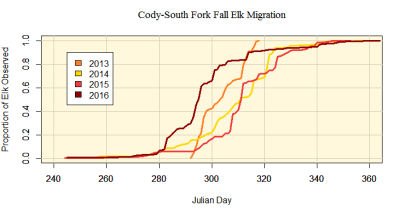
Gaining a better understanding of herd-specific migration timing and herd composition will benefit regional biologists within northwest Wyoming where many migratory elk herds mix with resident herds on winter habitats. Developing a network of trail cameras, used to collect demographic data remotely, will allow biologists to monitor these herds in manner that is cost effective, safe, and efficient. Effective photographic monitoring stations will provide an effective tool for elk herd demographic and migration timing monitoring.
Gallery
Contact
Travis Zaffarano
(307) 300-6959
Project Lead
Travis is earning his M.S. degree working with the Wyoming Cooperative Fish and Wildlife Research Unit at the University of Wyoming. His research investigates the use of trail cameras in conducting population surveys on migratory elk herds in the Greater Yellowstone Ecosystem. These new methodologies could provide a safer, more cost effective method of collecting this critical data.
Timeline
This project is scheduled for completion Spring 2018.
Funding & Partners
Wyoming Game and Fish Department
Rocky Mountain Elk Foundation
Wyoming Governor’s Big Game Licence Coalition
Wyoming Wildlife – The Foundation



